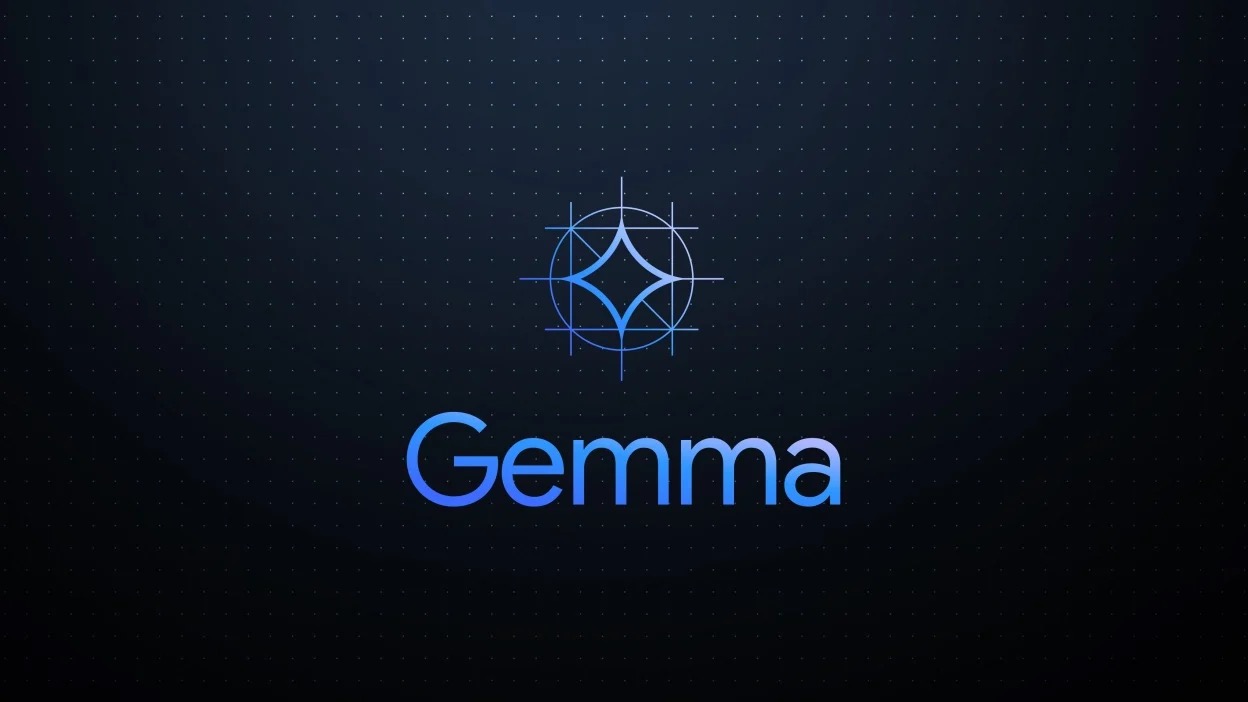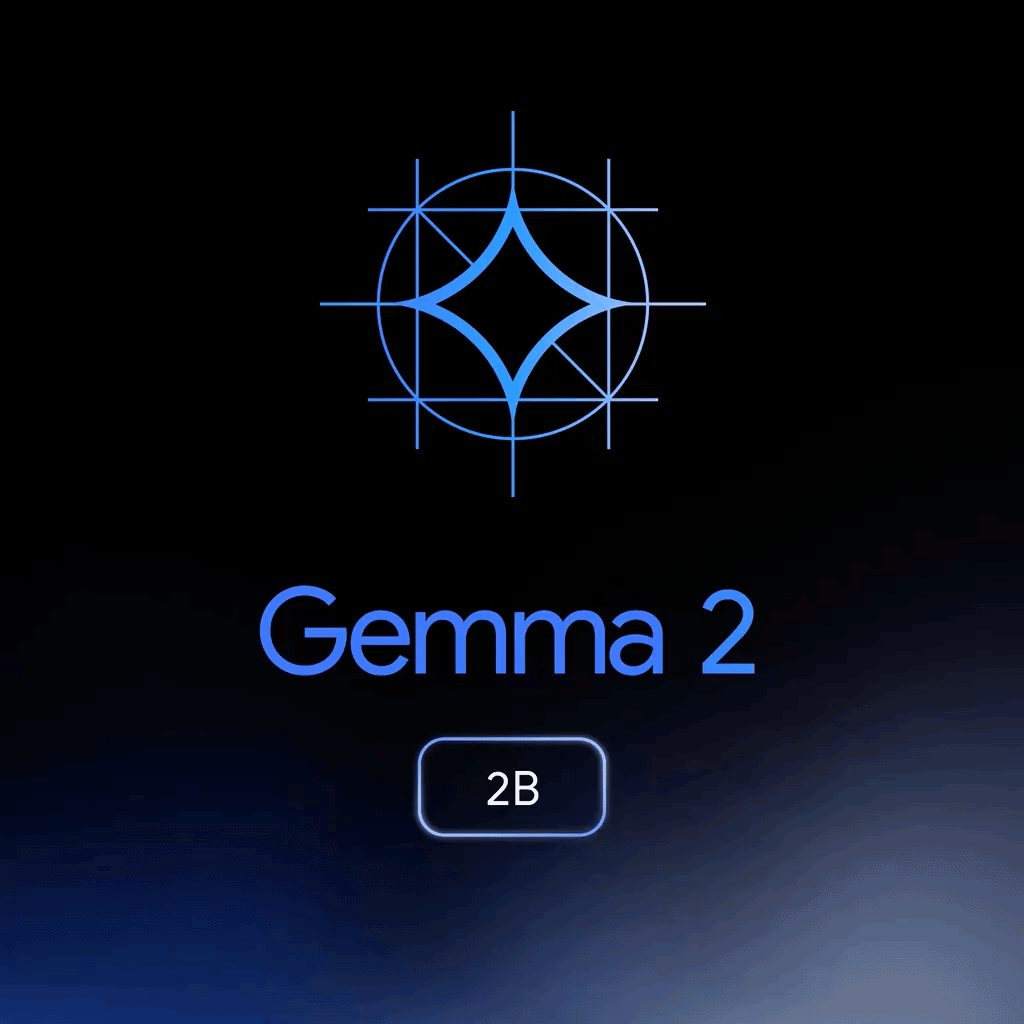gemma-2b
Maintainer: google-deepmind

1

| Property | Value |
|---|---|
| Run this model | Run on Replicate |
| API spec | View on Replicate |
| Github link | View on Github |
| Paper link | No paper link provided |
Create account to get full access
Model overview
The gemma-2b is a 2 billion parameter base version of the Gemma language model from Google's DeepMind. Gemma is a family of lightweight, state-of-the-art open models that are well-suited for a variety of text generation tasks, including question answering, summarization, and reasoning. The smaller 2B version and the larger 7B version are both available, along with instruct-tuned versions of each.
Model inputs and outputs
Inputs
- Prompt: A text string, such as a question, a prompt, or a document to be summarized.
Outputs
- Generated text: English-language text generated in response to the input, such as an answer to a question, or a summary of a document.
Capabilities
The gemma-2b model is capable of generating human-like text across a variety of domains, including creative writing, summarization, and question answering. It can be used to help with content creation tasks, power conversational interfaces, and assist with research and education. The model's relatively small size compared to other large language models makes it possible to deploy it in resource-constrained environments.
What can I use it for?
The gemma-2b model can be used for a wide range of applications, such as:
- Content Creation: Generate text for things like poems, scripts, marketing copy, and email drafts.
- Chatbots and Conversational AI: Power conversational interfaces for customer service, virtual assistants, or interactive applications.
- Text Summarization: Create concise summaries of text corpora, research papers, or reports.
- Natural Language Processing Research: Use the model as a foundation for experimenting with NLP techniques and developing new algorithms.
- Language Learning Tools: Assist with interactive language learning experiences, such as grammar correction or writing practice.
Things to try
One interesting thing to try with the gemma-2b model is using it for code generation. Given a high-level prompt or description, the model can generate working code snippets or even complete programs. This can be especially useful for rapid prototyping or exploring new ideas.
Another compelling use case is using the model for creative writing. By providing the model with an initial prompt or story seed, it can generate compelling narratives, poems, or fictional passages. This can help spark inspiration or aid in the creative process.
This summary was produced with help from an AI and may contain inaccuracies - check out the links to read the original source documents!
Related Models

gemma-2b-it

86
The gemma-2b-it is a 2 billion parameter instruct-tuned version of Google's Gemma language model, developed by google-deepmind. It is part of a suite of Gemma models which also includes the gemma-7b-it, gemma-7b, and other variants. These models are designed to perform a variety of natural language processing tasks with high capabilities. Model inputs and outputs The gemma-2b-it model takes in a text prompt and generates relevant text in response. The key input parameters include the prompt text, temperature to control randomness, top-k and top-p settings to control the diversity of the output, and maximum and minimum new tokens to generate. The output is an array of generated text. Inputs Prompt**: The text prompt to generate a response from. Temperature**: Adjusts the randomness of the output, with higher values producing more diverse and creative text. Top K**: Samples from the top K most likely tokens during decoding. Top P**: Samples from the top P percentage of most likely tokens during decoding. Max New Tokens**: The maximum number of new tokens to generate. Min New Tokens**: The minimum number of new tokens to generate. Repetition Penalty**: Controls how repetitive the generated text can be. Outputs Generated Text**: An array of generated text in response to the input prompt. Capabilities The gemma-2b-it model demonstrates strong natural language understanding and generation capabilities, allowing it to perform a wide variety of tasks such as question answering, text summarization, creative writing, and open-ended dialogue. It can generate coherent and contextually relevant text, exhibiting an understanding of language, tone, and structure. What can I use it for? The gemma-2b-it model could be utilized in a range of applications, such as chatbots, content generation, language translation, and task-oriented dialogue systems. Its versatility makes it suitable for use in both consumer-facing and enterprise-level applications. For example, a company could use gemma-2b-it to generate personalized product descriptions, marketing copy, or to power a customer service chatbot. Things to try Some interesting things to explore with the gemma-2b-it model include prompting it to write stories or poems, engaging in open-ended conversations, and experimenting with different parameter settings to see how they affect the output. The model's strong language understanding and generation capabilities make it a versatile tool for a variety of creative and practical applications.
Updated Invalid Date

gemma-7b

7
gemma-7b is a 7 billion parameter language model developed by Google DeepMind. It is a base version of the Gemma model, which is designed for natural language processing tasks. Similar models include DeepSeek-VL, a vision-language model, gfpgan, a face restoration algorithm, and meta-llama-3-8b-instruct, an 8 billion parameter language model from Meta. Model inputs and outputs gemma-7b takes in a prompt and various decoding parameters as inputs to generate text. The outputs are an array of generated text. Inputs Prompt**: The prompt to send to the model. Max New Tokens**: The maximum number of tokens to generate. Min New Tokens**: The minimum number of tokens to generate. To disable, set to -1. Temperature**: Adjusts the randomness of the outputs, with higher values resulting in more random text. Top K**: Samples from the top K most likely tokens when decoding. Top P**: Samples from the top P percentage of most likely tokens when decoding. Repetition Penalty**: Controls how repetitive the generated text can be. Outputs Output**: An array of generated text. Capabilities gemma-7b can be used for a variety of natural language processing tasks, such as text generation, translation, and summarization. It can generate coherent and contextually relevant text based on the provided prompt. What can I use it for? You can use gemma-7b for a range of applications, such as creative writing, content generation, and language modeling. For example, you could use it to generate product descriptions, summarize long articles, or write short stories. The model can also be fine-tuned on specific domains or tasks to improve its performance. Things to try One interesting thing to try with gemma-7b is to experiment with the different decoding parameters, such as temperature and top K/P, to see how they affect the generated text. You could also try providing the model with prompts that require it to reason about complex topics or generate text in a specific style or tone.
Updated Invalid Date

gemma-7b-it

66
The gemma-7b-it model is a 7 billion parameter instruct-tuned version of Google's Gemma language model. It is similar to other large language models like meta-llama-3-8b-instruct, llava-13b, and deepseek-vl-7b-base, which are also designed for natural language understanding and generation tasks. The gemma-7b-it model has been fine-tuned by Google's DeepMind team to follow instructions and engage in open-ended dialogue. Model inputs and outputs The gemma-7b-it model takes a text prompt as input and generates a sequence of text in response. The model accepts several parameters to control the output, including temperature, top-k and top-p sampling, and limits on the minimum and maximum number of new tokens to generate. Inputs prompt**: The initial text prompt to send to the model temperature**: Adjusts the randomness of the output, with higher values generating more diverse but less coherent text top_k**: Samples from the top k most likely tokens during decoding top_p**: Samples from the top p percentage of most likely tokens during decoding max_new_tokens**: The maximum number of new tokens to generate min_new_tokens**: The minimum number of new tokens to generate (or -1 to disable) repetition_penalty**: A parameter that controls how repetitive the generated text can be Outputs The model generates a sequence of text in response to the input prompt Capabilities The gemma-7b-it model is capable of engaging in open-ended dialogue, summarizing and analyzing text, answering questions, and generating creative content like stories and poetry. It can be used for a variety of natural language processing tasks, and its capabilities are comparable to other large language models. What can I use it for? The gemma-7b-it model could be useful for a wide range of applications, such as chatbots, content creation, language translation, sentiment analysis, and text summarization. It could be particularly valuable for companies or individuals looking to incorporate advanced natural language processing capabilities into their products or services. Things to try One interesting thing to try with the gemma-7b-it model is exploring its ability to engage in multi-turn dialogue. By providing the model with a series of prompts and responses, you can see how it maintains context and coherence over the course of a conversation. Another idea is to experiment with different parameter settings, such as adjusting the temperature or top-k/top-p values, to influence the creativity and diversity of the model's outputs.
Updated Invalid Date

gemma-2-2b

34
gemma-2-2b is a 2.2 billion parameter language model developed by Google's DeepMind team. It is part of the Gemma family of models, which also includes the gemma-2b, gemma-2b-it, gemma-7b, and gemma-7b-it models. These models are designed for general language understanding and generation tasks. Model inputs and outputs The gemma-2-2b model takes a text prompt as input and generates additional text in response. Users can control the model's output by adjusting parameters like temperature, top-k, and top-p. Inputs Prompt**: The initial text prompt to start the generation process. Temperature**: Adjusts the randomness of the outputs, with higher values generating more diverse and unpredictable text. Top K**: Limits the model to only consider the top K most likely tokens during generation. Top P**: Limits the model to only consider the top P percentage of most likely tokens during generation. Max New Tokens**: The maximum number of new tokens the model can generate in response to the prompt. Repetition Penalty**: Adjusts the penalty for repeating previously generated tokens. Outputs Generated Text**: The text generated by the model in response to the input prompt. Capabilities The gemma-2-2b model is capable of generating human-like text on a wide range of topics. It can be used for tasks like creative writing, summarization, question answering, and language translation. The model's large size and training on a diverse dataset allow it to capture complex linguistic patterns and generate coherent, contextual responses. What can I use it for? gemma-2-2b can be used for a variety of natural language processing tasks, including: Creative Writing**: Generate poems, stories, or other creative content based on a prompt. Content Creation**: Produce articles, blog posts, or marketing copy on a given topic. Conversational AI**: Build chatbots or virtual assistants that can engage in natural conversations. Question Answering**: Answer questions on a wide range of topics using the model's knowledge. Summarization**: Condense long passages of text into concise summaries. By leveraging the capabilities of gemma-2-2b, you can unlock new possibilities for language-based applications and services. Things to try One interesting way to explore the gemma-2-2b model is to prompt it with open-ended or creative tasks, such as asking it to write a short story or poem. The model's ability to generate coherent and imaginative text can lead to surprising and engaging results. You can also experiment with adjusting the various input parameters to see how they affect the model's output.
Updated Invalid Date